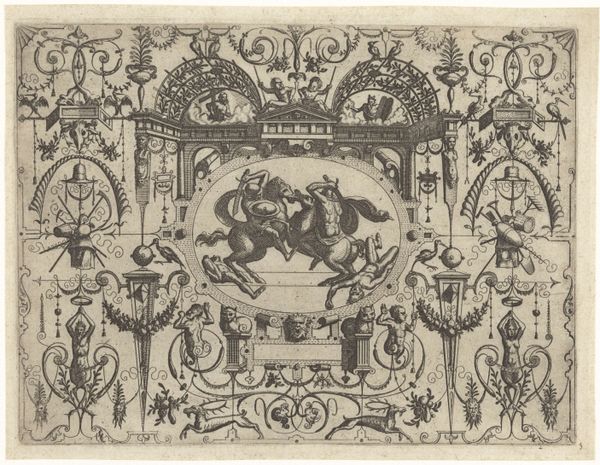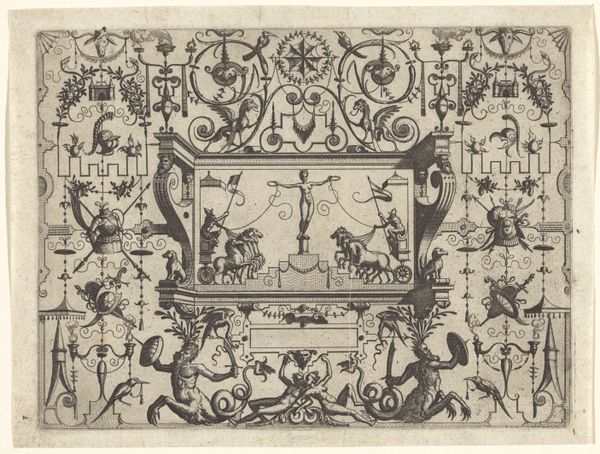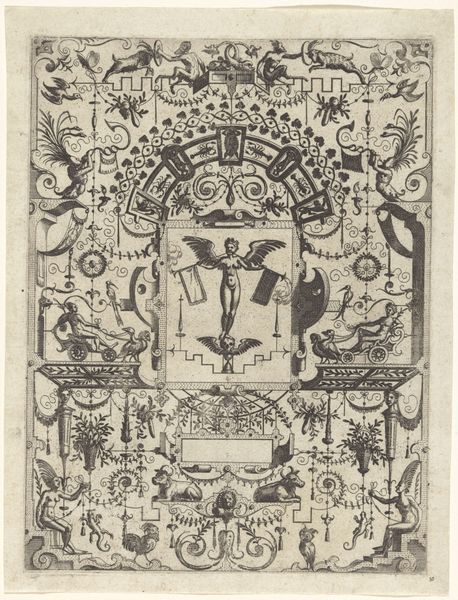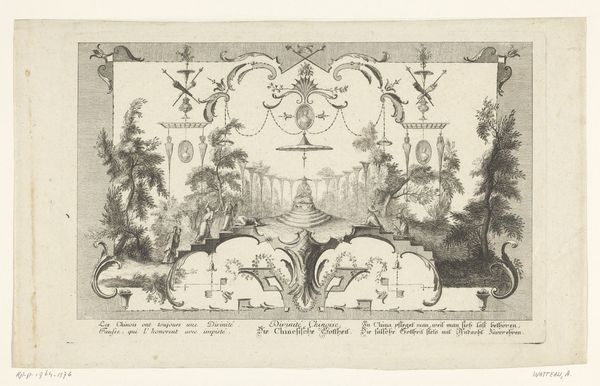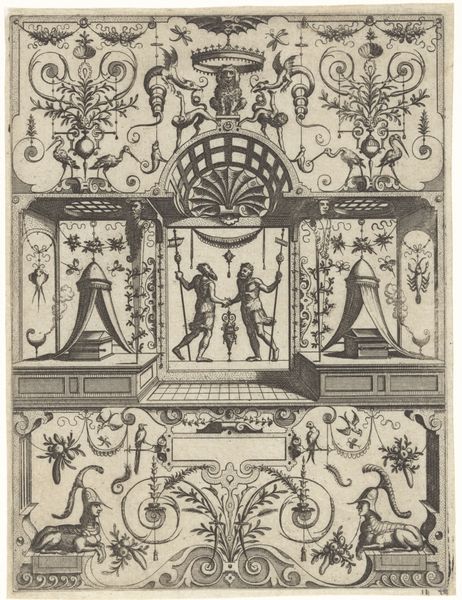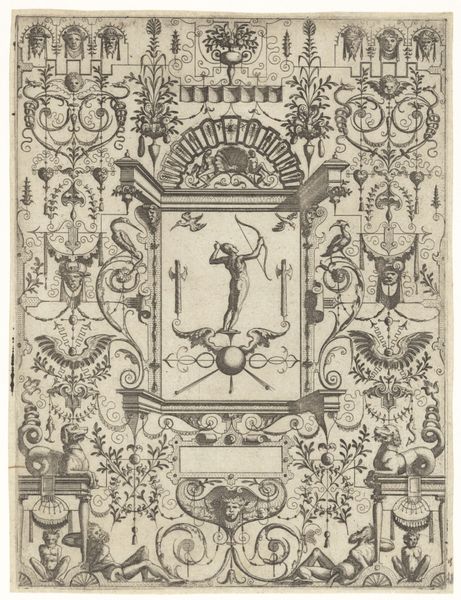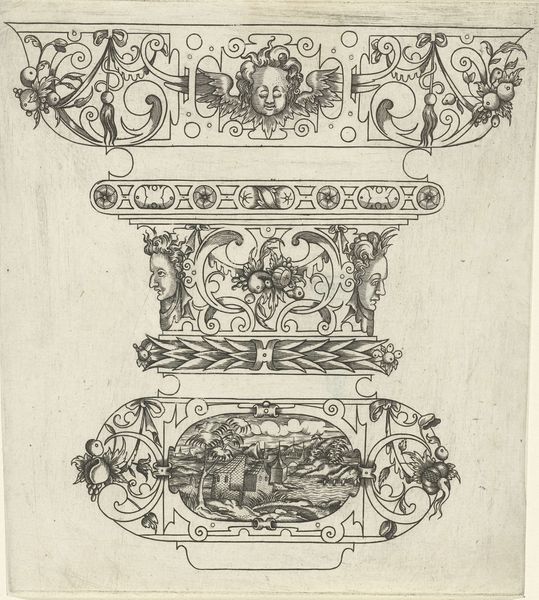
Architectuurfantasie met een trapvormig podium waarop een vrouw in een wagen zit 1565 - 1571
0:00
0:00
drawing, print, ink, engraving
#
drawing
#
allegory
#
pen drawing
# print
#
figuration
#
form
#
ink line art
#
11_renaissance
#
ink
#
line
#
history-painting
#
northern-renaissance
#
engraving
Dimensions: height 156 mm, width 206 mm
Copyright: Rijks Museum: Open Domain
Editor: Here we have "Architectuurfantasie met een trapvormig podium waarop een vrouw in een wagen zit," or Architectural Fantasy with a stepped podium upon which a woman sits in a chariot. Created between 1565 and 1571 by Johannes or Lucas van Doetechum, it's an ink engraving. The detail is astonishing, and the composition, with its ornate borders, feels almost dreamlike. What catches your eye most when you look at it? Curator: It's funny you say dreamlike. For me, it’s the sheer exuberance, that 'more is more' sensibility, isn't it? Think about this period; it is late Northern Renaissance, and there's a real fascination with classical antiquity. The artists weren't just copying it, they were reimagining it, adding layers of ornament and fantasy. I wonder, who *is* the woman in the chariot? Editor: Possibly an allegory? Curator: Good shout. Allegory was the rock and roll of the Renaissance, wasn’t it? Everyone was doing it. But why the stepped podium? What's the smoke offering all about? Do you find it confusing or intriguing? Editor: Intriguing, definitely! The way the artist combines all these classical motifs – the sphinxes, the eagles – with such intricate detail… it's like a cabinet of curiosities in visual form. Curator: Precisely! Think of it as a feast for the eyes, reflecting a world in which new discoveries were constantly challenging old assumptions. This isn't just decoration; it's a statement. A statement that humanity is ready to see, feel and understand everything. Editor: I'm beginning to see it less as a simple decorative piece and more as a reflection of a whole mindset, the Renaissance hunger for knowledge and its boundless imagination. Curator: Absolutely. And that, my friend, is why these supposed "fantasies" resonate with us still.
Comments
No comments
Be the first to comment and join the conversation on the ultimate creative platform.
